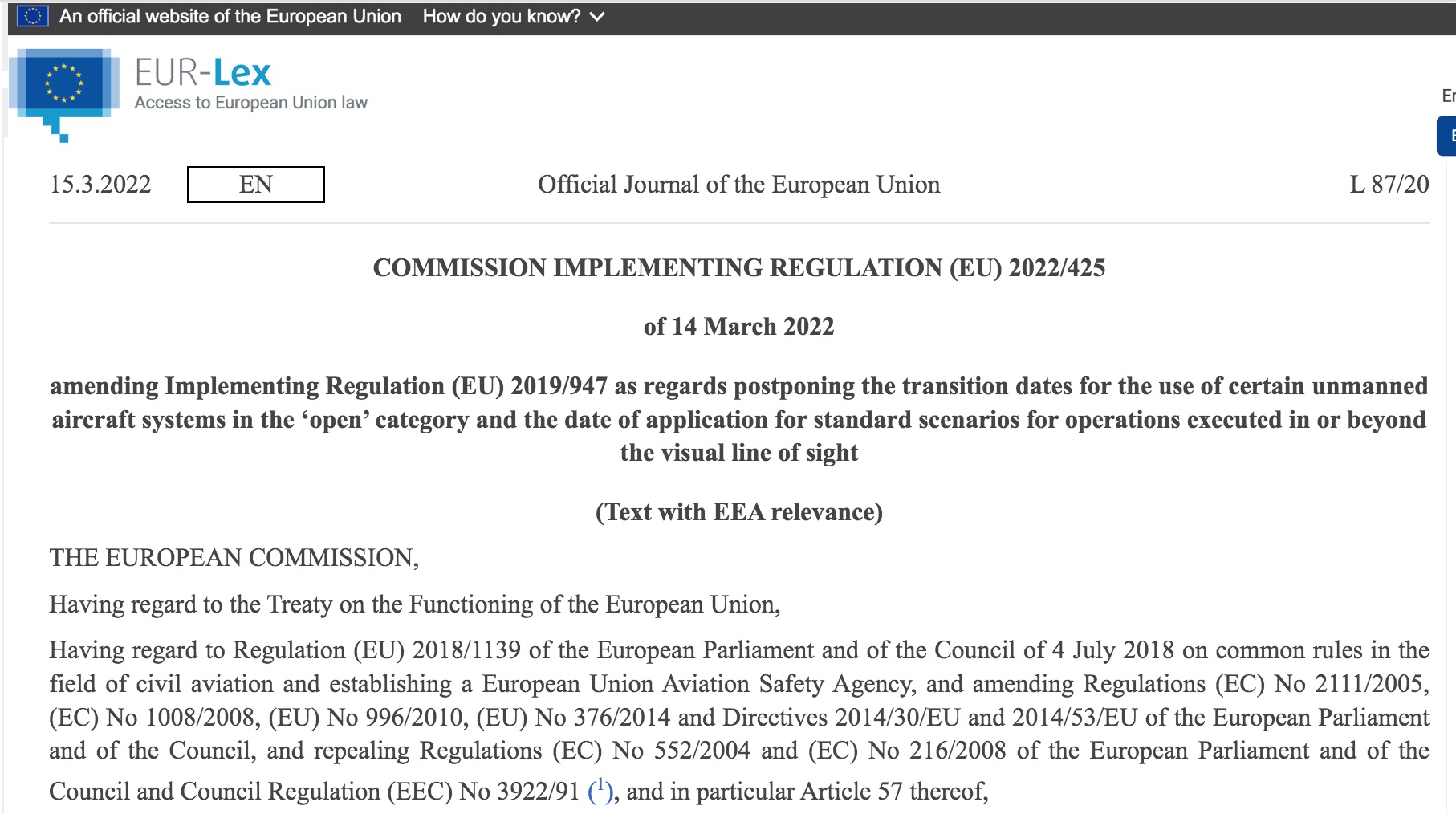This past March 14, EASA, the European Aviation Safety Agency, has published the Execution Regulation (EU) 2022/425 that modifies 2019/947 in relation to the dates of use of UAS or drones with class labeling according to EU Delegated Regulation 2019/945 (and its amendments).
In article 1 of the new EU regulation, the new date is indicated, being January 1, 2024, from which, drones with class labeling must be operated in an open category, maintaining what is indicated for privately manufactured drones. . Article 20 is worded as follows:
'UAS types within the meaning of Decision 768/2008/EC of the European Parliament and of the Council ( 6 ) that do not comply with Delegated Regulation (EU) 2019/945 and that are not privately manufactured may continue to be used in the conditions indicated below if they have been placed on the market before January 1, 2024.'
In Article 22, the introductory part is replaced by the following text:
' Without prejudice to the provisions of article 20, the use of UAS in the "open" category that do not meet the requirements of parts 1 to 5 of the annex to Commission Delegated Regulation (EU) 2019/945 (* ) during a transitional period that will end on December 31, 2023, under the following conditions:
a) unmanned aircraft with a take-off mass of less than 500 g are operated in accordance with the operational requirements set out in point 1 of section UAS.OPEN.020 of part A of the annex by a remote pilot holding the level of competence defined by the Member State concerned;
b) unmanned aircraft with a takeoff mass of less than 2 kg are used at a minimum horizontal distance of 50 m from people, and remote pilots have a level of competence at least equivalent to that established in point 2 of the section UAS.OPEN.030 of part A of the annex;
c) unmanned aircraft with a take-off mass of less than 25 kg are used in accordance with the operational requirements established in points 1 and 2 of section UAS.OPEN.040 and remote pilots have a level of proficiency of at least equivalent to that established in point 4, letter b), of section UAS.OPEN.020 of part A of the annex.'
In article 23, sections 2, 3 and 4 are replaced by the following text:
' 2. Article 5, paragraph 5, shall apply from January 1, 2024.
3. Point 2, letter g), of section UAS.OPEN.060 and point 1, letter l), subparagraph i), of section UAS.SPEC.050 of the annex shall be applicable from July 1, 2022, and point 1, letter l), subparagraph ii), of section UAS.SPEC.050 of the annex will be applicable as of January 1, 2024.
4. Without prejudice to the provisions of Article 21(1), until December 31, 2023 Member States may accept declarations made by UAS operators in accordance with Article 5(5) based on national standard scenarios or equivalent , if such national scenarios meet the requirements of section UAS.SPEC.020 of the annex.
Said declarations will cease to be valid as of January 1, 2026.'
This supposes a delay of the dates contemplated in the European regulations, due to the difficulty of finding drones or UAS with class labeling today. The administration has no choice but to delay the dates initially contemplated. At the moment, the design and manufacturing industry of the drone sector is in the process of obtaining the UAS certification requirements, and there are already some companies that have achieved it, such as Applus or Alter Tecnology.
When will we start to see the first class-labelled UAS on the market available to drone operating companies?
The new regulation will enter into force 20 days after its publication (March 14, 2022) in the Bulletin of the European Union.
https://eur-lex.europa.eu/eli/reg_impl/2022/425/oj


